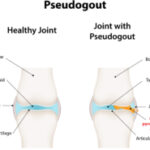They are, however, not the final criteria. Soon, Dr. Tedeschi and colleagues will publish the later portion of phase three, in which each of the classification criteria are weighted and ranked based on their relative importance in identifying SLE with high specificity and sensitivity.
“I think they’re on the right track and I think the weighting and ranking will be key” says Bonnie Bermas, MD, Dr. Morris Ziff Distinguished Professor of Rheumatology at the University of Texas Southwestern Medical Center, Dallas. “It’s good because (the classification criteria are) inclusive and with the weighting of different clinical and immunologic domains there will be more specificity, which is what you want.”
Already, the exercise in combing the literature and seeking consensus from a body of rheumatology experts has improved the entry criteria for SLE. Dr. Tedeschi and the team established that a positive antinuclear antibody (ANA) of equal to or greater than 1:80 titer is necessary to consider classifying a patient as SLE.
“By including the positive ANA as an entry criteria for the diagnosis of SLE, the authors will improve specificity at baseline,” says Dr. Bermas, a former colleague of Dr. Tedeschi’s; she was a rheumatologist at Brigham and Women’s Hospital in Boston before moving to UT Southwestern last year. Dr. Bermas was not involved in the study, but she does perform rheumatological research.
In reaching the current iteration of the classification criteria—and Dr. Tedeschi was quick to stress the process has been highly iterative—the research team also included patients.
“There was discussion about retaining a neurologic domain [for SLE] and the patient representatives were critical proponents in retaining it,” says Dr. Tedeschi. Specificity can be challenging because the neurologic symptoms, such as headache, can be due to any number of conditions that are not SLE.
The researchers also further refined definitions of some of the criteria, such as fever in the context of lupus and chronic cutaneous lupus. One of the team’s goals, Dr. Tedeschi explains, is to help other clinicians, including nephrologists and dermatologists, identify SLE patients to enroll in clinical studies.
“One part of the exercise is to try to get specific terminology and phrasing to achieve those goals,” she says.
Not for Diagnosis
The team also hopes to develop criteria that make it easier to identify patients who have been newly diagnosed while still maintaining high specificity.
“We want to try to distinguish people with early SLE from people with other connective tissue diseases, perhaps with a diagnosis less than 12 months prior,” says Dr. Tedeschi. “There may be manifestations that differ over time across the patient’s course of disease.”


